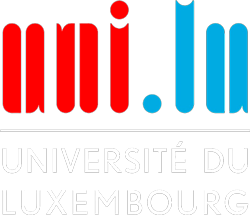Governing the mobility of asylum seekers in the European Union
Hotspots, Relocation and “Secondary Movements”
What is commonly described as the “refugee crisis” of 2015 should rather be interpreted as the failure of the European Union asylum regime to confine incoming migrants in the first country of entry, where an asylum application must be examined according to the Dublin regulation. To address this failure, the European Union and its member states intensified their efforts to control and reduce the mobility of incoming migrants along three main lines of intervention: the “hotspot approach”, relocation schemes, and the reintroduction of border controls in some border points within the Schengen area.
The “hotspot approach” involved the creation of 9 hotspot centres at the southern external border of the European Union (5 in Greece and 4 in Italy), where incoming migrants are registered, identified, and fingerprinted. Relocation sought to relieve migratory pressure from Greece and Italy by allowing the transfer of some newly arrived asylum seekers who were considered “in clear need of protection” to other member states. Finally, internal border controls were temporarily reintroduced by several member states, thus suspending free movement in the Schengen area.
Interrogating the future of the European Union
All the above-mentioned measures point out a crucial reorganisation of the European Union asylum regime in the wake of the so-called “refugee crisis”. The results of this reorganisation, as well as its effects on the ground, require analytical attention not only because of the growing importance of migration and its management in contemporary societies and political debates. They also deserve attention because the very future of the European Union and its project of integration is increasingly intertwined with the ability of EU institutions and member states to reach an agreement on a fair and feasible management of asylum, migration and borders.
For these reasons, besides contributing to scholarship on these topics, CONDISOBS will also provide a significant political contribution on two key issues around which the future configuration of the European Union seems to rest on. The first is the reform of the Common European Asylum System, and in particular the reform of the Dublin regulation, while the second concerns the future of the Schengen agreement in a time in which freedom of movement between member states is increasingly contested.
Three key measures, three research strands
Were hotspots, relocation, and border controls successful? This is the main question asked by this H2020 (Horizon 2020) project from the University of Luxembourg. Through an extensive, multi-sited qualitative study based on semi-structured interviews with institutional actors, non-governmental organisations and migrants, CONDISOBS investigates the effectiveness of such measures to control and discourage “secondary movements” in the European context.
The research project follows three intertwined strands of research, which reflect the three abovementioned lines of intervention undertaken in the European Union after 2015. The first strand of research investigates the functioning of hotspots in Greece and Italy and their ability to register all incoming migrants and channel them to the relevant administrative procedure. The second focuses on the practical difficulties encountered by Greek and Italian authorities to relocate people, as well as on the trajectories of those who were relocated to Luxembourg and Lithuania. The third deals with the effects of the reintroduction of border controls in three strategic border points through which migrants have attempted to leave Italy in recent years (Bardonecchia, Brenner and Ventimiglia)?
CONDISOBS is two-year project (January 2020-January 2022), which has received funding from the European Union’s Horizon 2020 research and innovation programme under the Marie Skłodowska-Curie grant agreement no. 838722.
More informations on https://condisobs.uni.lu/
